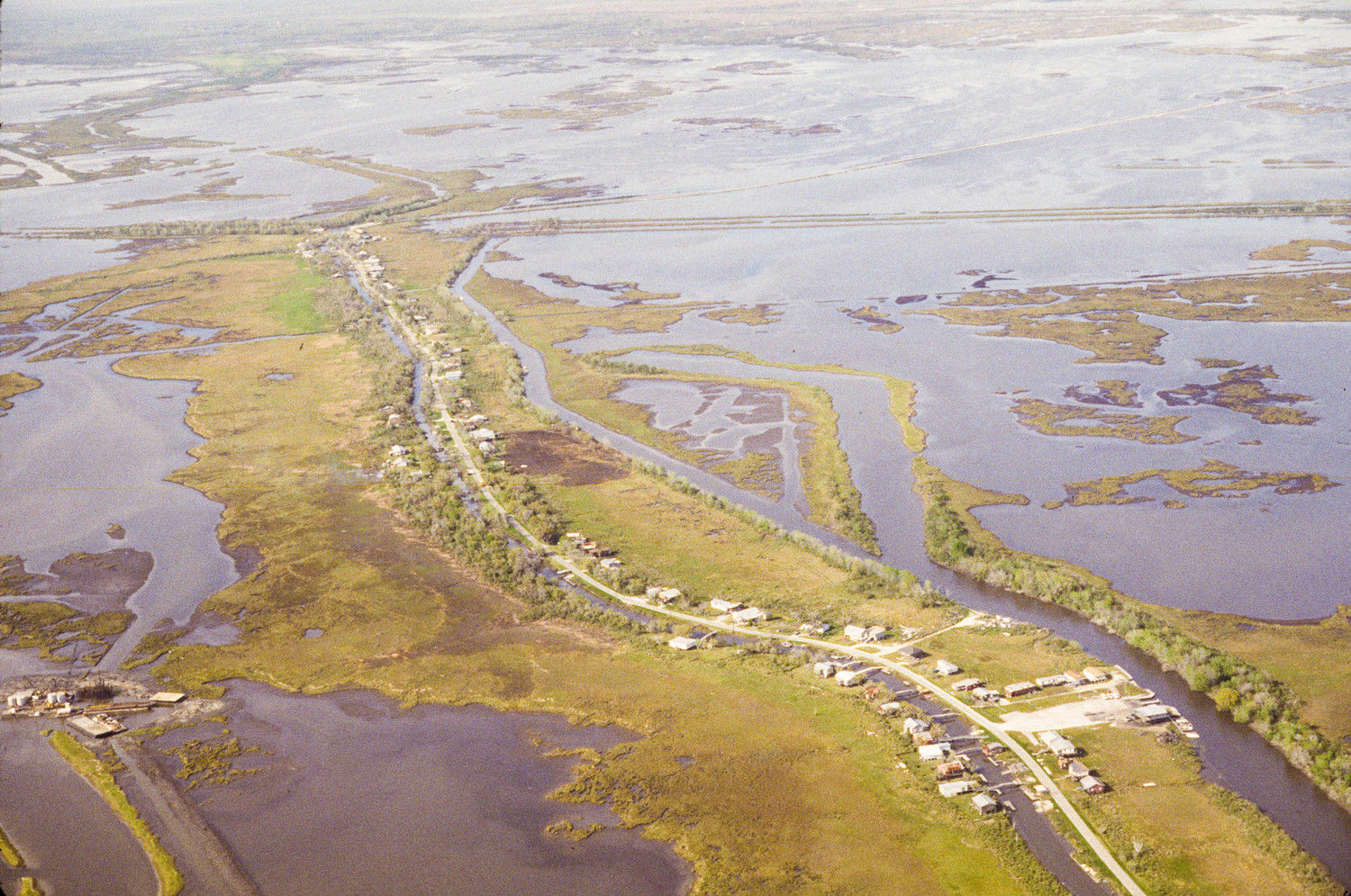
Prep Roundup: Braves take top spot in The Times poll
January 17, 2017
Fate of local market still not known after blaze
January 17, 2017The state’s latest update to its master document on coastal preservation lays out a daunting challenge for the coast’s survival.
The Coastal Protection and Restoration Authority released the draft for its 2017 Master Plan earlier this month. The plan, updated every five years, proposes 126 projects totaling $50 billion to combat continued coastal land loss across the state over the next 50 years.
The master plan’s prognostications on land loss have become grimmer since the 2012 version was released. In 2012, the plan predicted the state, facing sea level rise and land subsidence, would lose about 1,750 square miles of land over the next 50 years if the state took no action. The 2012 plan estimated the state’s projects could build or maintain 800 square miles, for a net loss of about 950 square miles over 50 years. In this year’s draft, the “no action” scenario, with a medium environmental scenario, predicts a loss of about 2,250 miles, while the proposed projects are still slated to hold onto 800 miles, leaving the state with a loss of 1,450 square miles over the next half century.
Terrebonne and Lafourche parishes are on the front lines of the battle for Louisiana’s coast, and the two neighbors face giant threats to their land going forward. According to fact sheets on coastal parishes in the 2017 draft, Terrebonne and Lafourche would each lose 41 percent of their land areas over the next 50 years with no action taken.
To combat that, the state has included in the 2017 draft 26 projects totaling almost $18.2 billion dollars in Terrebonne and Lafourche. The projects cover a variety of measures in protecting the coast and its citizens, from about $283 million to divert Atchafalaya River sediment to the Penchant Basin and southwest Terrebonne marshes to a $363.5 million effort over 30 years to provide nonstructural risk reduction in Raceland.
Even with the sizeable financial and labor-intensive efforts to protect the Bayou Region’s coast, Terrebonne and Lafourche still stand to suffer considerable land loss going forward. The fact sheet estimates the CPRA projects could reduce Terrebonne land loss by 35 percent, meaning it would still lose almost 27 percent of its land over the next 50 years. Lafourche could see its 50-year land loss reduced by 41 percent from the 2017 draft’s projects; that reduction still translates to about 24 percent of Lafourche land disappearing.
While he noted the master plan does not consider non-state efforts local entities undertake, South Lafourche Levee District General Manager Windell Curole said the projected land loss figures present an honest look at the coast’s future and the challenges state and coastal leaders will face going forward in even maintaining the coast that remains.
“[The master plan] identifies places we can reduce or bring back some of the coast, but at the same time we’re still losing some. I think it’s a realistic approach to the situation, that our goal should be to hang onto as much of the coast that we have right now and ensure the places that absolutely need to be protected are protected,” Curole said.
Simone Maloz, executive director of coastal advocacy nonprofit Restore or Retreat, said the 2017 plan’s admissions regarding land loss put the onus on policymakers to come up with long-term projects that can withstand future coastal conditions.
“Projects have to be more robust, but most importantly they also have to be sustainable because the conditions change,” Maloz said. “So, if you’re not making a systemic change, if the project you’re putting on the ground isn’t making a change to the system itself, then of course the conditions affect it, so those projects don’t hold up.”
One area where concerns of sustainability have harmed project efforts has been in eastern Terrebonne, where land loss is most significant. According to Mart Black, director of the parish’s Coastal Restoration and Preservation department, many projects in eastern Terrebonne have stalled in engineering due to poor soil conditions. The CPRA, which judges projects on a cost to benefit ratio, sees the ratio suffer as soil conditions call for ever-increasing dredging costs and threaten the projects’ long-term viability. Black said his department has sought to appeal to state leaders for more projects by stressing the alarming rate of land loss in Terrebonne, but understands the political and financial limits they work under. He said his department is working on a written response to the draft master plan to present before March 26, the cut off date for public comments on the plan.
“We’re getting projects, which is good. [The CPRA is] trying to spread it around. They’re subject to a lot of criticism and legislative criticism when they spend all their money in Terrebonne. We understand that,” Black said.
Terrebonne Levee and Conservation District Executive Director Reggie Dupre said he has been a proponent of project stability by making restoration and protection efforts work hand-in-hand. Dupre said since the $350 million Houma Navigational Canal lock complex, an environmental structure that will also provide protection as the “crown jewel” of the Morganza to the Gulf levee system, is receiving the go-ahead, local authorities should work on attaining the Lake Boudreaux freshwater diversion project. According to Dupre, the diversion would be the critical linchpin of maximizing the lock complex’s environmental benefits. He said finding efforts that work together as pieces of a larger, holistic puzzle for a basin or region is key to project efficacy.
“What we’ve noticed in the recent past, since we started building levees on the south side of the parish, we’re starting to see a little bit of rebirth of freshwater vegetation inside the levee system. That kind of proves the point that restoration and protection go hand in hand,” Dupre said.
Curole said manmade changes to the Mississippi River, spanning across the river’s length to benefit the entire nation, have changed the geologic process that built the delta. Curole said those changes mean the delta will never rebuild the way it did before, no matter what the state does. According to him, the state and parishes can do more things like land bridges to keep freshwater in the area for longer, building up land and reducing saltwater intrusion. Curole said the reality of the delta’s fundamental change means coastal leaders must focus on using all available resources in the most effective and efficient way possible.
“I don’t think we have the natural system that built this coast. The amount of sediment coming down is not the same,” Curole said. “So even if we said we’re not going to have any levees, we’re going to let the river do what it wants to do, it’s not going to build the coast to what it was before. What we can do: I think we can be smart and I think we can maintain some areas and have them be more beneficial than they are today.”
All the coastal officials contacted mentioned the added emphasis on nonstructural risk reduction in the new plan. Those who have driven down the bayous are familiar with these projects, such as raised houses lining the streets. Nonstructural plans also include floodproofing homes and voluntary buyouts, where parishes will buy land from those in vulnerable areas who want an option to move. The 2017 draft plan has $1.75 billion in nonstructural reduction projects to be spent in Terrebonne and Lafourche over the next 30 years, with an added emphasis on homes further north in the parish. The nonstructural effort in Houma alone is slated to cost $1.27 billion, while the aforementioned Raceland project has a $363.5 million price tag.
Maloz said the parishes are generally in charge of administering nonstructural money toward specific projects. She said the greater focus on nonstructural solutions to protecting people from floods is the state facing oncoming coastal challenges head-on.
“I think that this is a result of worsening future conditions. Again, that sea level rise, that subsidence, those conditions in the future, I think that’s a nod to that. They understand that restoration is tough, protection is tough, so this is another option available in that category,” Maloz said.
The CPRA is hosting a series of open house events for citizens to get more information on the 2017 draft and offer their own public comments on what projects should be included in the final master plan. The only local meeting will be held on Tuesday at the Houma-Terrebonne Civic Center. The event, held in the center’s Pelican Room, will begin with an open house at 3:30 p.m. before a presentation of the plan at 5:30 p.m. Black said the event was a chance for the public to make their voices heard on the plan. Curole said a continued dialogue between coastal communities and policymakers in Baton Rouge on what projects have been working and what have not is essential to maximizing its preservation efforts.
“I don’t believe we have the time or money to do everything we need to do, so it’s very important that we do this as well as possible. Use the best information, both scientific information and the best practical information we can find. I think if we can get those two sources of information and have them work together well, we can do the best job possible,” Curole said. •









